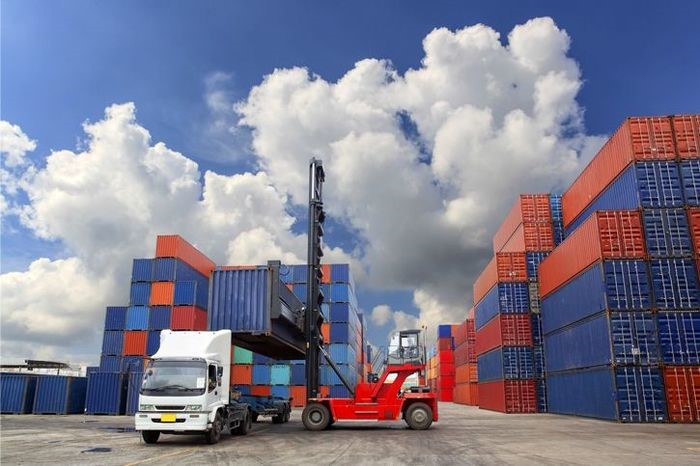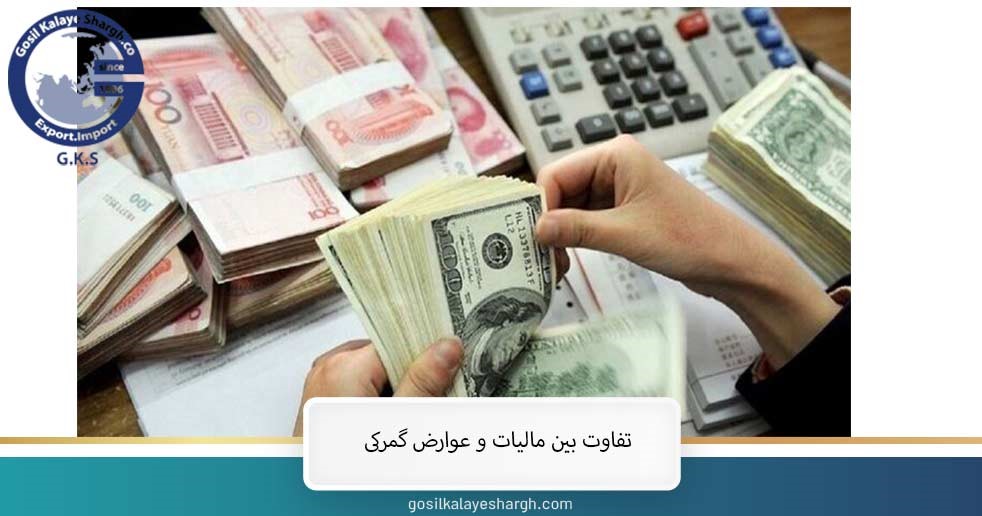Customs duties are taxes that are indirectly considered for the entry and clearance of foreign goods. In international trade, countries must pay customs tax to obtain legal permission and cross the border of goods.
The tax rate is determined based on exported and imported goods, so this cost is not the same for all people. In the stages of goods clearance, this fee is collected from the exporting and importing countries. The purpose of determining these duties is to control the entry and exit of goods, and in this situation, prohibited and restricted goods must pay more taxes. Customs duty rates are determined based on the country of origin.
Types of customs tariff
The customs tariff has different examples and is determined based on the type of export and import product. If we want to divide it in terms of its purpose, it has 3 separate categories:
- Financial
By setting this tariff, the government tries to cover its financial expenses. Expenses that are spent on passenger car entry fees. This tax is determined by the country of origin.
- supportive
This tariff is more protective and the main purpose of its imposition is to provide a competitive environment between domestic and foreign goods. To balance the balance of payments, imposing such taxes is very important.
- Ershadhi
Determination of customs duties indicative is done with the aim of changing the consumer’s choice. In order to direct the demand from one product to another, it is necessary to establish such an important and practical tariff.
The customs tariff has various examples in terms of appearance and nature, which we will introduce here:
- Unit tariff
In the single tariff, all imported goods have a fixed rate, which does not depend on the value and type of products, and is determined based on laws. In some countries, a fixed rate of 4% is set for imported goods.
- composite tariff
In this tariff, imported goods are classified according to their price. The tariff of these goods is calculated in compound form and provided to the applicants. This tariff is very important in customs clearance.
- General tariff
Customs duties that are generally determined have special conditions. This tariff applies to all goods regardless of their origin and has the same rate. The country of origin cannot affect this tariff.
- Preferential tariff
Preferential tariffs bring good benefits to countries of origin. Countries that are connected through agreements and trade concessions can use this tariff; Because the customs tariff rate is lower.
In terms of calculation, the customs tariff has different examples, which we refer to here:
- Value tariff
The international transport company calculates the value tariff based on the value of the imported goods. To determine the import duty, the tariff rate is multiplied by the value of the goods. In this tariff, it is very important to know the correct value of the goods.
- Special tariff or quantity
In special customs duties, import duties are calculated based on the volume and quantity of goods and the value of the product is not important. The company must know the volume and quantity of the goods in order to be able to determine the import duties by multiplying the high volume by the duty rate.
- Mixed tariff
In this tariff, value method and special method are combined so that both the value of the goods and its volume are important. To determine the import duties in this tariff, the value and quantity of the product is needed. For this reason, this tariff has a lot of flexibility. In the export of plastic to foreign countries, this tariff determines the duties paid.
Advantages of setting customs tariff
Collecting customs duties or taxes has many advantages for governments. Protecting the economy is the most important advantage; By receiving this tax, the following countries can greatly contribute to the development of the economy. Expansion of jobs and recruitment of human resources is another advantage of receiving duties and customs tariffs.
By paying the customs tariff, you can support domestic industries more. Controlling the entry and exit of goods, especially prohibited products, is one of the other benefits of receiving customs fees from the government. Determining the tax rate is very important for economic stability and transportation system management.
Income generation for the government and trade balance are other benefits of receiving taxes from exporters and importers. Encouraging exports is the most important advantage that has led to the further development of shipping companies.
What is the customs tariff code?
The tariff code plays a significant role in customs duties. This code is a standard way of classifying traded products. This code is absolutely necessary to identify the goods at the time of determining taxes and duties and collecting statistics, which is determined by the customs authorities of the countries. Duties are determined with the help of customs tariff code and forms.
For this reason, it is recommended that applicants fill out the forms correctly. If there is a mistake in the form, it should lead to a heavy customs penalty such as confiscation. HS Code is used in the process of exporting goods in all countries. The products classified with this code have their own tariff. This code is 8 to 10 digits of which 4 to 6 digits are fixed against the world.
Countries can use longer codes to classify goods. Customs duties are determined according to these codes and goods can be identified in this way. Today, more than 98% of goods in international trade are classified in this way. Product coding makes price monitoring easier.
How to find the customs tariff code of the product?
Since the tariff code is very important in determining the customs tariff, it is necessary for exporters and importers to find the code of each product. To find the code, you must go through these important steps correctly:
- In the first step, you must log in to the Iran Code website to be able to access the codes of all products.
- On the first page of the site, there is a section called Arboretum, which you must click on. By finding the code in this section, you can determine the customs duties related to each product.
- On the page that opens, there is general information about the products, and you can choose the product tab, catalog, supplier, and international code correspondences according to your needs. When you click on the matches section, a new page will open where you need to find the name of your classified item.
Method of calculating customs duties
The customs tariff is determined based on various criteria. The government plays a key role in determining this tariff. The economic and political policies of the countries are involved in this matter, and this has caused the customs cost of goods to be different in all countries. Customs duty is the most important payment made in customs, and receiving it brings many advantages for countries.
To calculate the customs duties, the law considers the equivalent of 4% of the customs value plus commercial profit. Commercial profit is obtained by multiplying the value of goods by the exchange rate and the tariff rate. The difference in commercial profit has caused that the customs duties are not the same for everyone. To get the safe value, it is enough to multiply the exchange rate announced by the customs by the value of the goods.
By adding all the transportation costs, the input value of the goods is obtained. The cost of storage, stoppage of goods, unloading and loading are customs fees that play a significant role in calculating the final tariff. The most important thing that you should pay attention to when calculating the customs tariff is whether the goods are exported or imported. Export products do not include customs tariffs and 75% of costs are lower for them.
How to pay customs duties
Customs duties can be paid in different ways. The advancement of technology has made it possible for people who do not have the conditions to visit the organization in person to pay the specified customs duties online. Merchants can save time and money by performing customs operations online.
To access the services of this organization, a site has been designed so that users can benefit from the services by referring to it. After entering the system, you can enter the relevant section and pay the customs tariff. By entering the payment ID, relevant information on the amount of salary and tariff will be displayed for you, and you can pay it through the valid portal. If you do not pay attention to tolls, fines and non-cash fines will be imposed on you.
Important points about customs duties
In relation to customs duties, there are important points that traders should pay attention to:
- National task of potential natural disasters
Goods that are illegal and use which endangers human health are imported with a tax rate of 10-45%. The customs law for tobacco, tobacco and harmful substances has determined this rate.
- Exemption from paying customs duties
Some imported goods have customs exemptions. These items are completely exempt from paying taxes or customs duties. No deduction is taken for these goods; Because they enter the country without paying duties.
- Anti-dumping duty
Another noteworthy point is the anti-dumping duty. Selling goods below their normal value has made the government able to impose anti-dumping duties on them. These customs duties are determined according to the laws.
What is the difference between tax and customs duty?
Although taxes and duties have the same meaning, they are technically different. Duties are taxes that are imposed on imported goods and the purpose of paying them is to protect the local economy. If the tax is considered for all imported and domestically produced goods that are sold in the country. Generating revenue for the government is the main purpose of taxation.
This issue can be the main difference between duties and taxes. In fact, the tax covers a wider level and includes more goods. In addition to duties, the importer must also pay sales tax. It increases every year according to customs tariff and tax laws, and importers and sellers are obliged to pay it.
final word
Customs duties are paid indirectly and can help a lot to advance the goals of the economy. This tariff has different examples that are considered for some goods. Export and import products are classified with the help of tariff code so that the tax cost can be determined for them. Merchants who do not pay the fees are subject to heavy fines. Tax rights are determined based on the laws and policies of each country, that’s why this tariff is not the same in all countries and for all goods.






